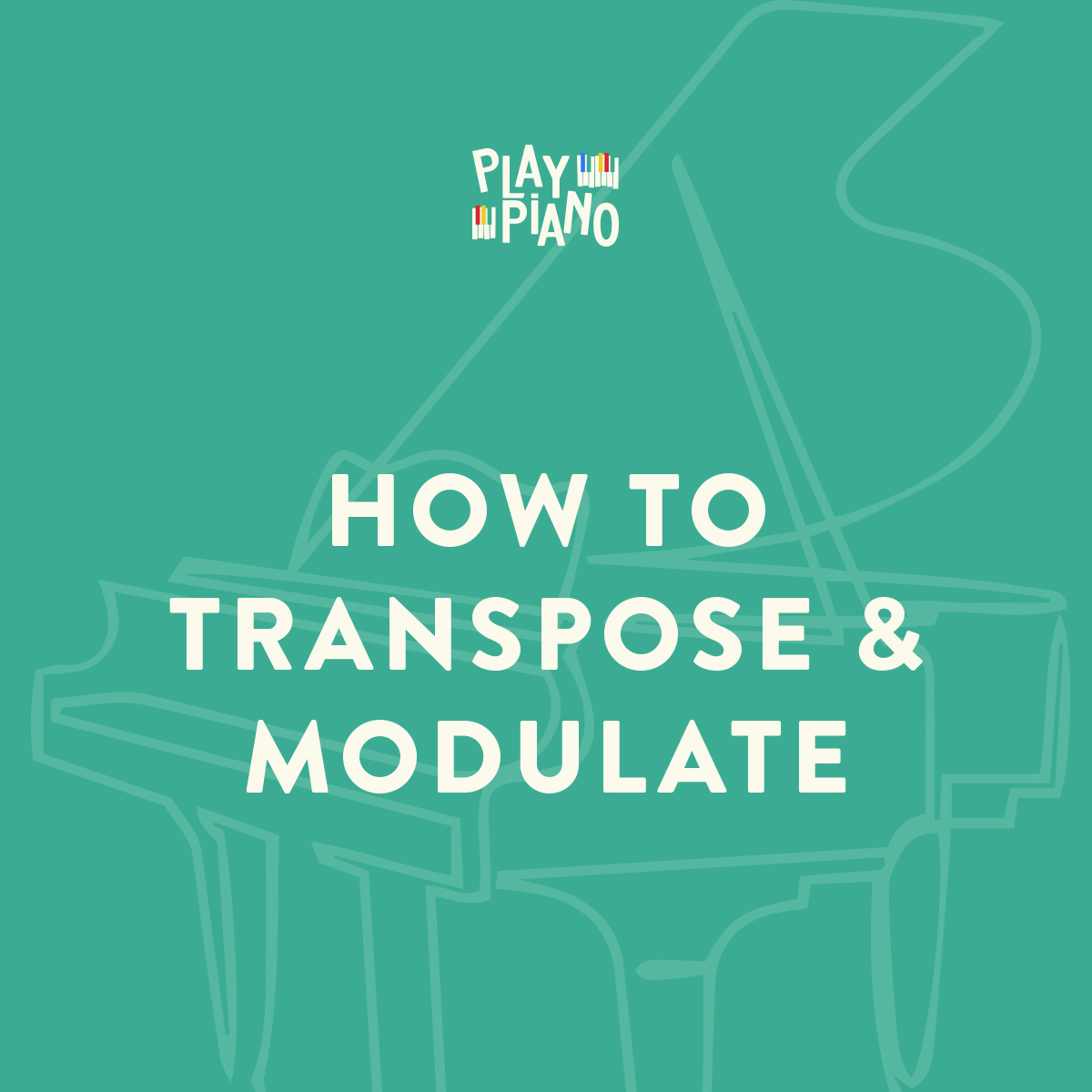Description
There are only 12 major keys in which you can play, and each of these keys has 3 chords which occur more often than any others. Each key is mathematically the same as any other key, so by knowing scale degrees and the primary chords in each key (and later the secondary chords), you can transpose into any other key after your fingers get used to the configurations of that particular key. You’ll also learn to modulate smoothly by finding the V7 chord in the new key, leading to the tonic chord. If all this sounds like Greek to you now, it won’t after you take this most important course.
How do transposition and modulation relate? Are they the same?
I’m sure that you have had the experience sometime in your piano-playing life when someone asks you to play a song — but in a different key than in which it is written. It might be a singer wanting you to lower the song a step so he/she doesn’t screech. It might be a song leader wanting you to play a song in a more comfortable keys for a congregation or group. It might be a trumpet player looking over your shoulder and wanting to play along with you — but when he/she plays the same note you are playing, it sure doesn’t sound the same!
So… it’s your job, as pianist, to get that song moved to a different key. That’s transposition –Â playing or writing a song in a different key than in which it was originally written.
Modulation is similar but different — modulation means the process of getting from the old key to the new key. In other words, if I’m playing in the key of C, and then want to play in the key of Eb, I have to learn to modulate — move smoothly from one key to another without being too abrupt and jarring.
There are basically 3 ways to transpose:
- by intervals
- by scale degrees
- by solfege — the moveable “do” system.
But since solfege applies mostly to singers, we will ignore that possibility and just take up the first two:
- Transposing using intervals: If the new key is an interval of a minor 3rd above the old key, then all notes in the song will also be an interval of a minor 3rd higher. In other words, if you are transposing from the key of C to the key of Eb, which is a minor 3rd higher (or major 6th lower — whichever way you want to look at it), then all melody notes will also be a minor 3rd higher:
- “G” in the key of C would become “Bb” in the key of Eb.
- “E” in the key of C would become “:G” in the new key of Eb.
- “A” would become “C”, “B” would become “D”, and so on.
- All chords would also move a minor 3rd higher.
- The “C chord” would become the “Eb chord”, the “F chord” would become the “Ab chord”, and so on.
- For example, Silent Night starts on the 5th degree of the scale, goes up to the 6th, back to the 5th, then down to the 3rd. In the key of C that is: G-A-G-E. But in the key of Eb it is Bb-C-Bb-G. Why? Because the scale degrees 5-6-5-3 are constant — we just need to apply them in each key. What about chords? Same idea. If the chord progression on Silent Night is the I chord followed by the V chord, followed by the I chord, followed by the IV chord, etc. — then in the key of C that means C-G-C-F-etc., but in the key of Eb it means Eb-Bb-Eb-Ab-etc. Transposing using scale degrees: Each key you play in has it’s own scale degrees. In the key of C the scale degrees are: C=1, D=2, E=3, F=4, G=5, A=6, B=7, C=8. In the key of Eb, however, Eb=1, F=2, G=3, Ab=4, Bb=5, C=6, D=7, Eb=8. So if I want to transpose Silent Night, for example, from the key of C to the key of Eb, I need to notice what scale degrees I am using in the key of C, and then use those same scale degrees in the key of Eb.
Modulation means getting between keys, so let’s say you are playing in the key of C, but you want to get to the key of Eb smoothly, without jarring the nerves of the listeners. There are lots of ways to do it, but the main point is that you have to get to the V7 chord of the new key. So from the key of C to the key of Eb, that means getting to Bb7. How do we do that smoothly? We look for chords with common notes. Since the V of the V of the new key would be Fm7, we have C as a common note. So we hold the C in the C chord, and move the rest of the C chord to Fm7, then Bb7, then Eb, and presto — we are there! I realize that may be a bit hard to follow with just printed words to follow, but if you saw it happen (like on a video) you would understand it instantly, I think.
Hope this has helped you understand both the process and the difference between transposing and modulating but words alone can be confusing, so if you want to SEE it done and clearly see HOW it is done, order the 3-part course! Then it will become crystal clear for you.
This course contains 1 Audio CD & 2 DVD Videos








Reviews
There are no reviews yet.